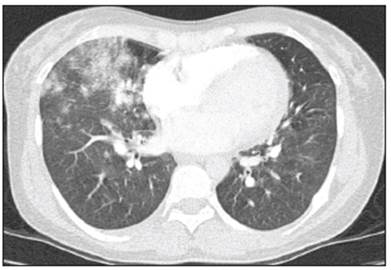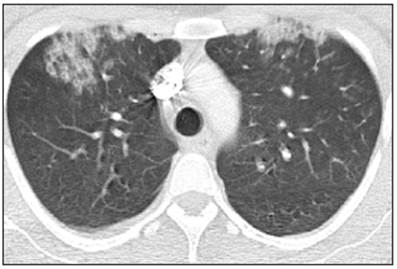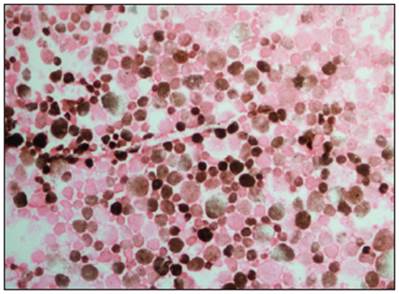This was a 28-year-old woman with a history of well-controlled asthma, who had smoked 15 cigarettes per day since age 10, and used alcohol and basuco (unpurified cocaine base) since age 12. Four hours after using basuco she began to have dyspnea and a productive cough with bloody sputum, coupled with coarse rales and negative HIV. A chest tomography showed peripheral aveolar-interstitial opacities in the upper and middle lobes. The histopathology of a bronchoalveolar lavage showed numerous hemosiderophages related to pulmonary hemorrhage foci.

Figure 1. Axial high-resolution chest tomography image, lung window, with evidence of alveolar-interstitial opacities in the middle lobe.

Figure 2. Axial high-resolution chest tomography image, lung window, showing alveolar-interstitial opacities in the anterior segments of the upper lobes.

Figure 3 Cytology of the bronchoalveolar lavage showing numerous macrophages with brown intracytoplasmic pigment (hemosiderophages).
Crack lung is an acute pulmonary syndrome which presents following the consumption of crack cocaine and is considered to be a rare and potentially fatal complication. The diagnosis is based on clinical assessment, imaging and a significant hemosiderophage count in relation with pulmonary hemorrhage 1,2. Treatment con sists of stopping the consumption of the toxic substance. The use of systemic corticosteroids is controversial 1,3,4. In our patient, inhaled corticosteroids were used with a satisfactory outcome.











 text in
text in 


